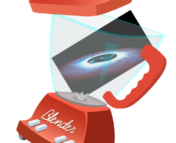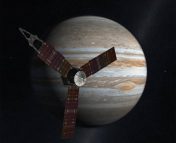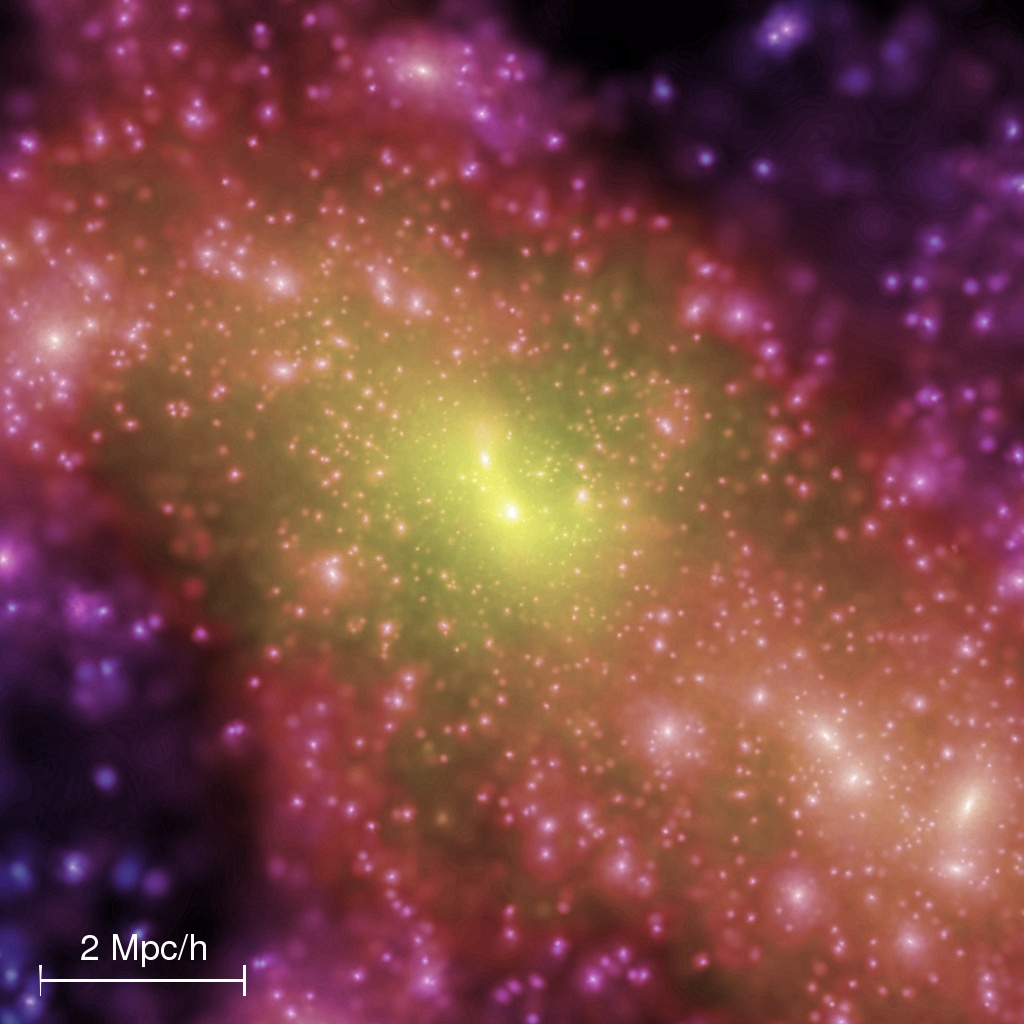Title: Properties and merger signatures of galaxies hosting LISA coalescing massive black hole binaries
Authors: David Izquierdo-Villalba, Monica Colpi, Marta Volonteri, Daniele Spinoso, Silvia Bonoli, Alberto Sesana
First-author institution: Università degli Studi di Milano-Bicocca, Piazza della Scienza, Milano, Italy
Status: Submitted to A&A, preprint on arXiv
The Laser Interferometer Space Antenna (LISA) is the highly-anticipated mission to detect gravitational waves (GWs) with frequencies of 0.1 – 100mHz, between the frequency windows of pulsar timing arrays and LIGO/Virgo/KAGRA. There are many expected sources of GWs in this frequency band to which LISA will be sensitive: binary white dwarfs, extreme mass ratio inspirals, and massive black hole binaries (MBHBs).
Massive black holes (MBHs) are found at the centers of most galaxies, and they have masses greater than 10^5 solar masses. The origins and growth of MBHs are debated, however, the masses of MBHs are strongly correlated with the properties of their host galaxies, which suggests that they evolved together. Current scientific consensus says that galaxies grow hierarchically i.e. by merging together as well as accumulating intergalactic gas. If galaxies are merging, then MBHBs must exist. As MBHBs inspiral and eventually coalesce, they radiate GWs, and they are expected to be one of the strongest sources of GWs in the LISA frequency band. Theoretically, LISA will be able to localise sources of GWs to within less than a square degree in the sky, therefore we could potentially observe the coalescence with traditional, electromagnetic telescopes while we also listen to their radiated GWs. This would be the zenith of multimessenger astronomy, as we’d learn so much about the evolution of our cosmos.
GW, where are you?
It is an open question whether we can attribute a host galaxy to a GW source with LISA. There are thousands of observable galaxies within a square degree of sky that could host a GW source… Given the poor accuracy, can we use observations to help attribute a host galaxy to an MBHB? This is what this paper sets out to discover.
To determine the most likely properties of MBHBs that LISA will be able to detect and resolve, the authors generated a simulated lightcone – a mock Universe featuring only the galaxies that an observer would expect to observe by the end of the simulation. The lightcone is generated by coupling galaxy astrophysics to merger trees from dark matter simulations. In short, two halos of dark matter merge in a simulation, which we attribute to being a galaxy merger. With this simulation, we can forecast what LISA may be able to detect. The authors then define the number of MBHB sources that LISA could detect as binaries with a total mass of 10^4-10^7 solar masses, mass ratio (the fraction of mass in the lighter MBH compared to the heavier MBH) of 0.1 or greater, and will coalesce within 1Myr (1 million years). This cut of MBHBs represents less than 1% of all of the MBHs within this mass range. We’ll call these sources ‘LISA MBHBs.’
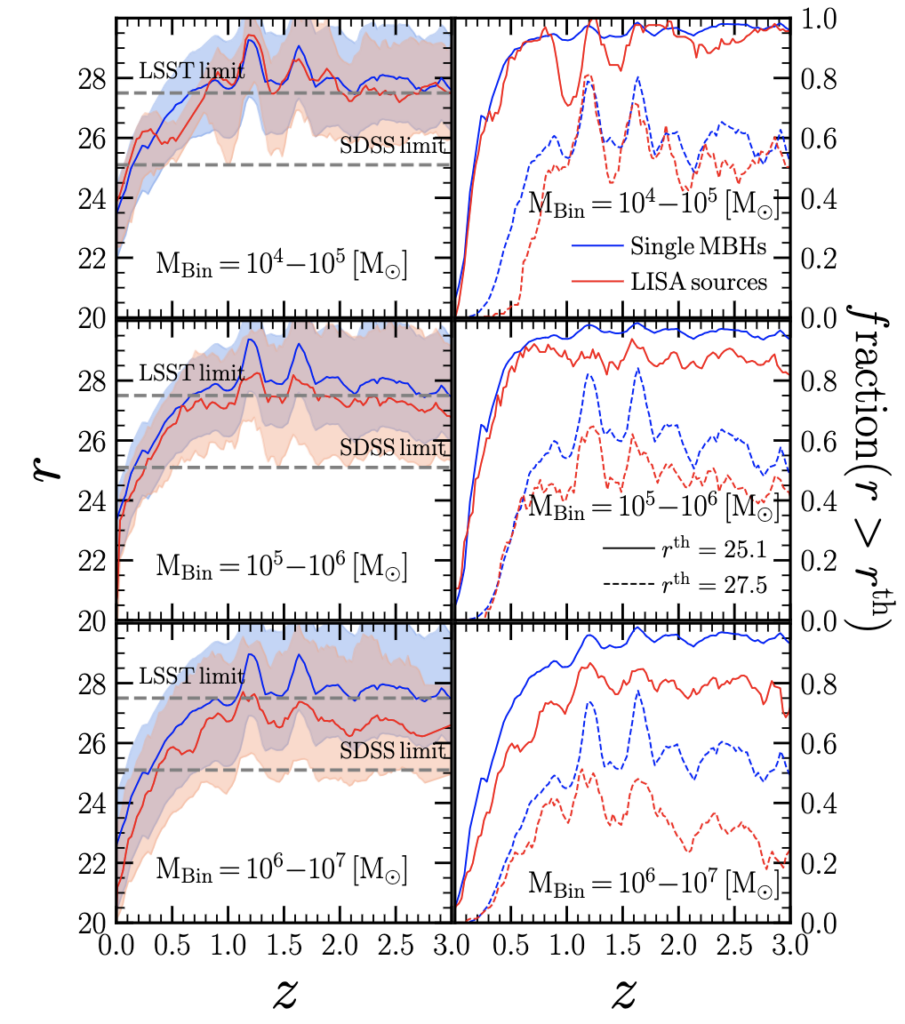
The authors investigated the properties of the galaxies hosting LISA MBHBs, and find that they’re expected to be found in star-forming, gas-rich, and disc-dominated dwarf galaxies (stellar masses of 10^8-10^9 solar masses). These properties are similar to galaxies hosting single MBHs, making galaxies hosting LISA MBHBs hard to distinguish from any other galaxy with an MBH. This is particularly shown in Figure 1 which compares the r-band magnitudes (read: brightness) of host galaxies as a function of redshift (z, read: distance) and mass bin on the left, and the fraction of host galaxies in each population that could be detected by SDSS and the upcoming LSST on the right.
The authors find that LISA MBHB host galaxies are optically very dim, with an r-band magnitude greater than 20, and that 80% of them won’t be observable by SDSS, corresponding to z<0.5. LSST will improve on this, extending the search horizon to z ~ 2 and having the capability of observing 50% of LISA MBHB host galaxies. Prospects are only slightly better for host galaxies of single MBHs. The median brightness of the host galaxies, as well as the uncertainty on the measurement, are similar between the two populations for each mass bin and across redshifts. Therefore, it’ll be extremely difficult to distinguish between a LISA MBHB host galaxy and an MBH host galaxy.
Merged and signed
Instead of using observations of galaxies, the authors attempt to use merger signatures as a tracer of LISA MBHBs. Merger signatures are visual features of a merged galaxy that suggest it has recently merged, such as stellar tidal tails, bridges, streams, and shell structures. These structures can still exist for approximately 2Gyrs (2 billion years) after the merger. Figure 2 shows a sky map of one simulated LISA source at z ~ 2. The source is shown by the star, while the surrounding dots show low-mass host galaxies with (blue, red) and without (grey) merger signatures within 7Mpc (megaparsecs) of the GW source.
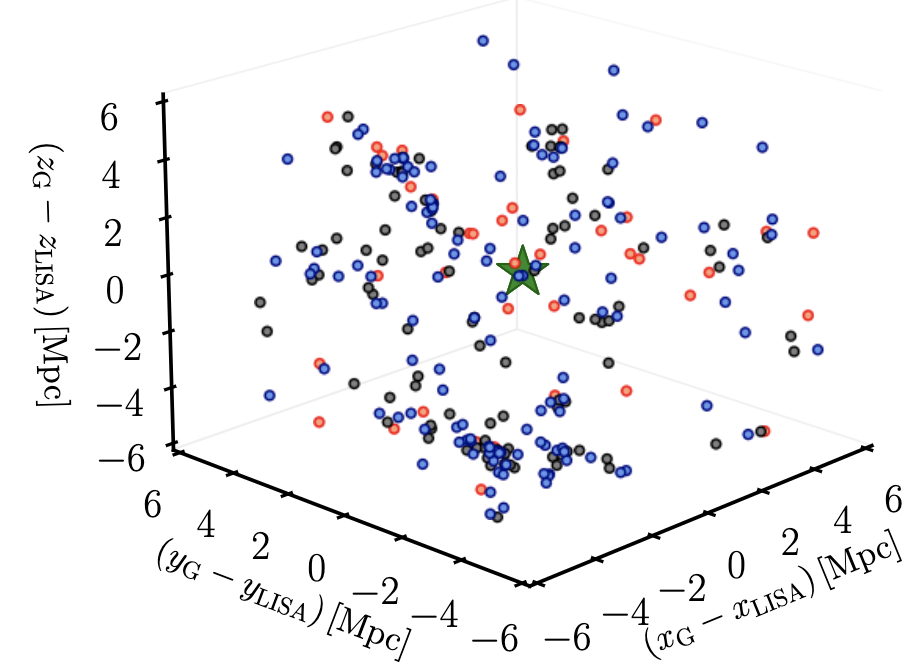
The environment surrounding the LISA MBHB is surrounded by recently merged dwarf galaxies! 60% of these galaxies show some merger signature, making identification of the LISA source next to impossible. To make things worse, being in such a dynamic environment, the host galaxy of the LISA MBHB is very likely to undergo many mergers. Because of the long lifetime of the MBHB, the merger signature of the host galaxy will likely be uncorrelated to a signature related to the merger that created the MBHB in the first place…
Therefore, the authors conclude that the properties and merger signatures of LISA source hosts will be poor tracers for their identification. A different approach will be required. Well, at least astronomers have another 14 years to think of a solution!
Edited by Cole Meldorf
Featured image credit: NASA/JPL-Caltech/NASAEA/ESA/CXC/STScl/GSFCSVS/S.Barke (CC BY 4.0)


